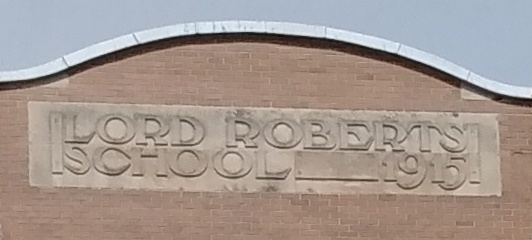First of all, let's establish what "Nissouri" means. Some residents believe it's a corruption of the phrase "nigh Zorra," meaning "next to Zorra." Why? Because East Nissouri Township in Oxford County was situated next to Zorra Township.* Forget it. Nissouri means something like "gurgling waters" in an Indigenous language. When the former township was first settled by Europeans, there were many running streams emptying into the nearby Thames.
Land for this church and cemetery was donated by George Black in 1844, a decade before the church was built. The church was constructed from heavy oak timbers supplied by local farms and has rounded windows. It was veneered with brick in the 1880s by John Thompson. The first minister was Robert Hall who served for twenty-one years as a circuit preacher in the neighbourhood. By the 1860s, there was a forty-member congregation.
 |
| Cement block Sunday School room at rear. |
Originally Presbyterian, the church joined the United Church of Canada in 1925 after church members voted in favour of church union. The church was lit by coal and Coleman lamps before hydro was installed in 1938. A drive shed once to the north of the building is now gone.
The congregation celebrated its 150th anniversary in 2004 but disbanded in the summer of 2021. One assumes attendance had dropped to far fewer than forty. No word yet on what happens to the building now.
But the church is perched on a hill surrounded by a cemetery of one and three quarter acres overlooking Gregory Creek valley. Now inactive, the cemetery is said to have more than 800 burials, the first known interment being that of Hannah Horton, local midwife, in 1844. I didn't find a grave marker with her name but there can be no doubt there are many more graves than gravestones. This is true of most older cemeteries. Many families could not afford a marker and some markers have been lost.
 |
| A poignant reminder of the harshness of pioneer life: "To The Memory of George McDonald Who died Sept. 4th 1852 Aged 35 Years. And His Wife Mary, Who died Sept. 21, 1853 Ae. 24 yrs." |
**James Reaney, The Red Heart. Toronto: McClelland & Stewart, 1949. p. 60.












.jpg)

.jpg)
































